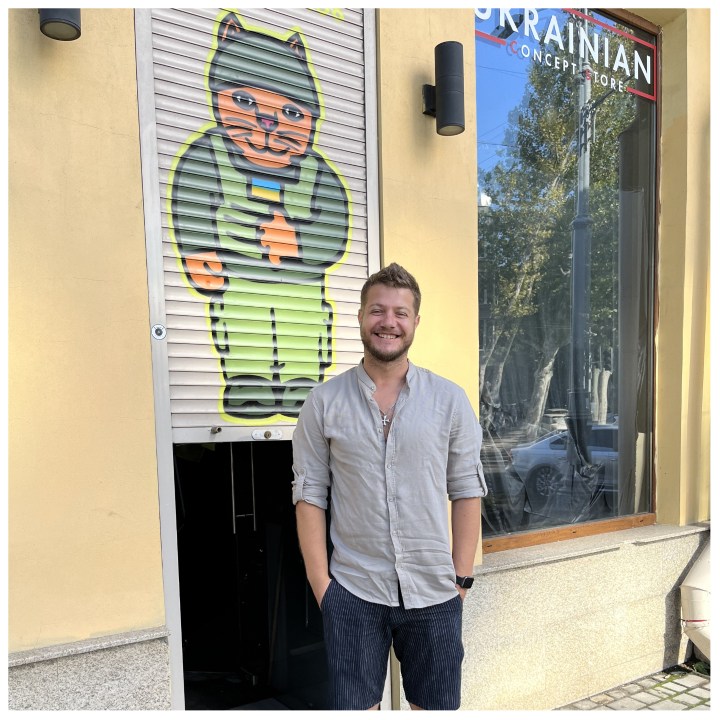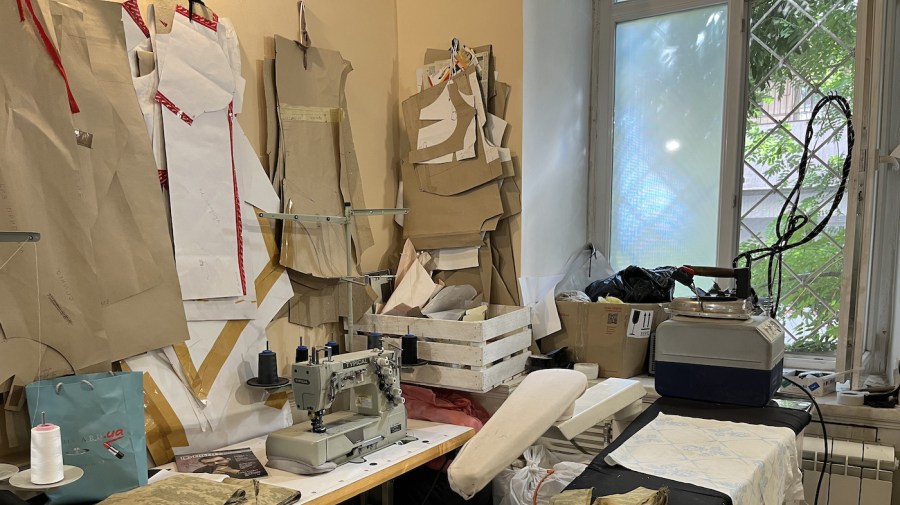From high fashion to flak jackets: Local Odesa designer now outfits Ukrainian military
ODESA, Ukraine — There’s not much difference between designing dresses and bulletproof vests, says Ivan Fotesko, a fashion designer turned army outfitter from Odesa.
Fotesko and his friends still can’t believe the turn their lives have taken. Mid-morning they sit at an outdoor cafe to speak with a visiting American journalist from The Hill. Across the street is the municipality’s food distribution center for Ukrainians who have fled their home cities now under Russian occupation.
Fotesko and his two friends, Arthur Petrosjan and Michael Mirkovich, are preparing to drive to Mykoliav the next day. They are bringing donations of bottled water — the city is cut off from the piped water supply — and their latest batch of military fatigues, which includes flak jackets, boots and other tactical accessories to soldiers who are fighting on the front lines of that city.

The three have been working together since March to supplement needed military clothing and supplies to Ukrainian soldiers. While military aid from the U.S. and other Western countries focuses on big-budget items such as heavy artillery, volunteer initiatives and NGOs have stepped in to fill the smaller — but critical — gaps.
In the earliest days of Russia’s invasion, the friends went from storing Molotov cocktails to supplying military-clothing once they saw the need — with Ukrainian soldiers posting on social media pleading for flak jackets, boots and uniforms to fight in.
Fotesko is considered a high-profile fashion designer in Ukraine. He’s transformed his Odesa storefront, where he had sold custom women’s designs, to a factory churning out bulletproof vests, uniforms, boots, medical bags and other utility textiles.
His metal security gate bears a graffiti cartoon of a cat, the symbol of Odesa, wearing military fatigues, flak jacket and a Ukrainian flag. Inside the “Ukrainian Concept Store” are piles of boots in plastic wrap. On shelves and desks are stacks of camouflage pants, utility belts, medical kit bags and camouflage netting.
A female mannequin lies discarded in a corner.

Camouflage cloth lays out over a draft table in the back, to be measured, cut and sewn all in the same place.
Fotesko shrugs when asked if the shift has been a major change, saying he’s still managed to produce at least six dresses over these past six months. He’d rather be designing dresses, saying he cries every day, but is intent on helping where he can.
Supplying front-line fighters takes nearly all of Fotesko and his two friends’ time.
Mirkovich and Petrosjan largely help with financing and production. They say much of it is self-funded — the production needs are so great they find little time to fundraise.
They advertise a little on their own social media, but mostly are responding to requests for needed front-line items.
“Each Instagram you can find the information that ‘military needs everything, starting from the shoes and finishing with the bullet proof vests.’ So we decide to start to do the vests. It was our decision in the beginning of March,” Mirkovich said.

They have moved from fully sourcing the flak jackets, meaning including the bullet-proof plates, to providing just the jackets, with the Ukrainian army handling the plates themselves.
From March through this Wednesday, they said they have delivered approximately 750 bulletproof vests.
“In the beginning it was like crazy, everybody needs it. Now it is a little bit better because the government” is helping meet the needs, Mirkovich explained.
Still, the men are spending nearly all their time filling orders or working to raise funds to produce even more goods. They created a social media page advertising their work only a few days earlier.
“All the money that we get is fundraising, our own money and it’s getting harder and harder, from day to day. We can do more, and we want to do more because we have too many orders,” he said.
Mirkovich, an area manager of Guess stores in Ukraine, continues to work full time — “my job continues, but salary decreases,” he said — while dedicating his free time to their volunteer outfit.
Petrosjan, a professional architect, said he spends “almost all day every day,” working on the military clothing project. In the first days of Russia’s invasion, he said he began volunteering at a humanitarian center that was overwhelmed with thousands of refugees fleeing the onslaught in Mariupol and Kharkiv.
“It was hell,” he said of meeting the refugees, each with “their own histories, their own tragedy — it was hard work.”

Petrosjan said that making the clothes for soldiers is exhausting, but that they are proud to do it.
Fotesko agreed they are doing their best to help people on the front lines.
“The main thing is to stand up and help us now,” Fotesko says of what his message to the U.S. would be. “Not tomorrow, not in five minutes, just now,” adding that “each cent” of donations and aid is put to use.
“Each coin is very important for us.”
The Hill’s Laura Kelly is on assignment in Ukraine.
Copyright 2024 Nexstar Media Inc. All rights reserved. This material may not be published, broadcast, rewritten, or redistributed..









